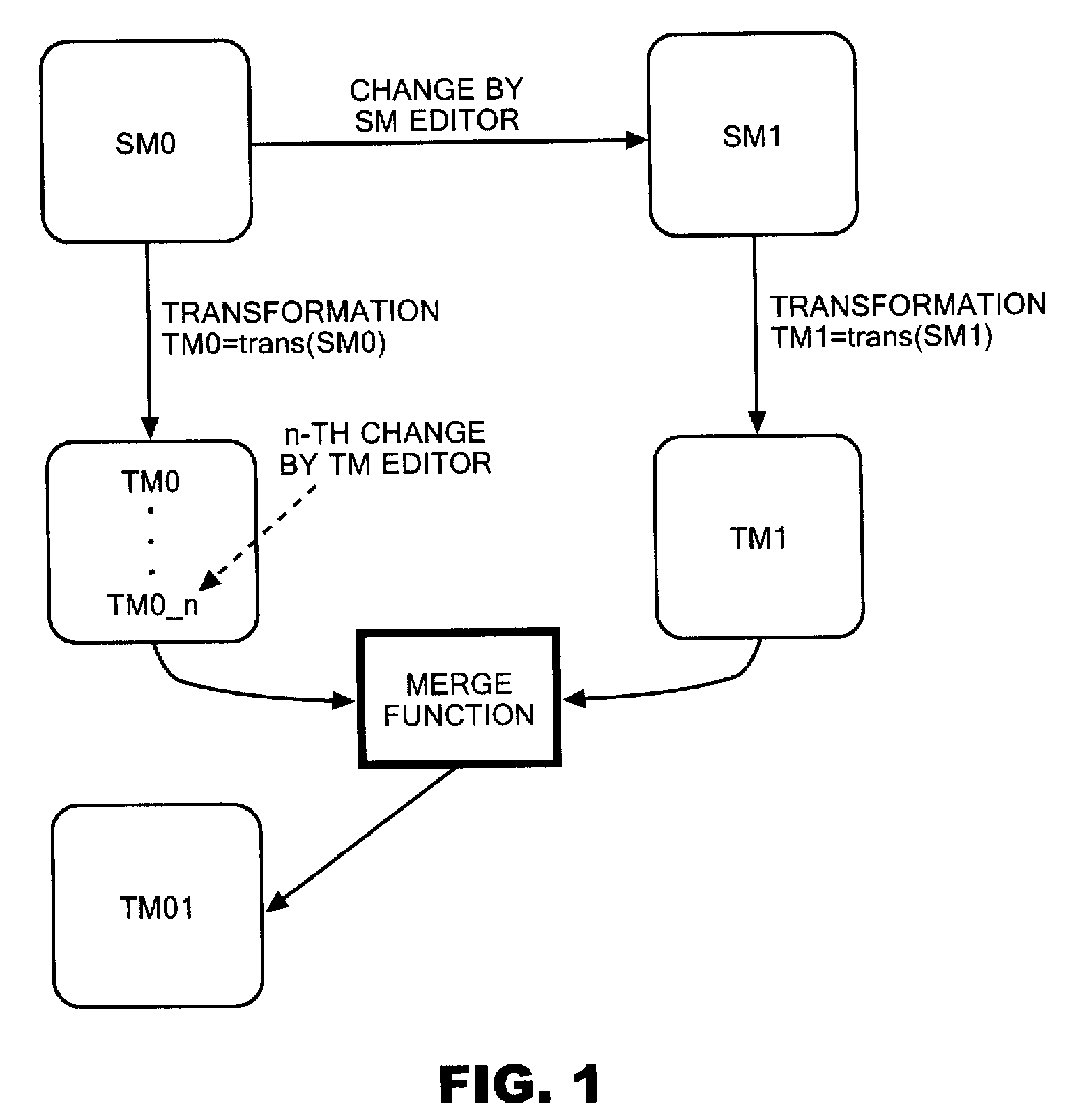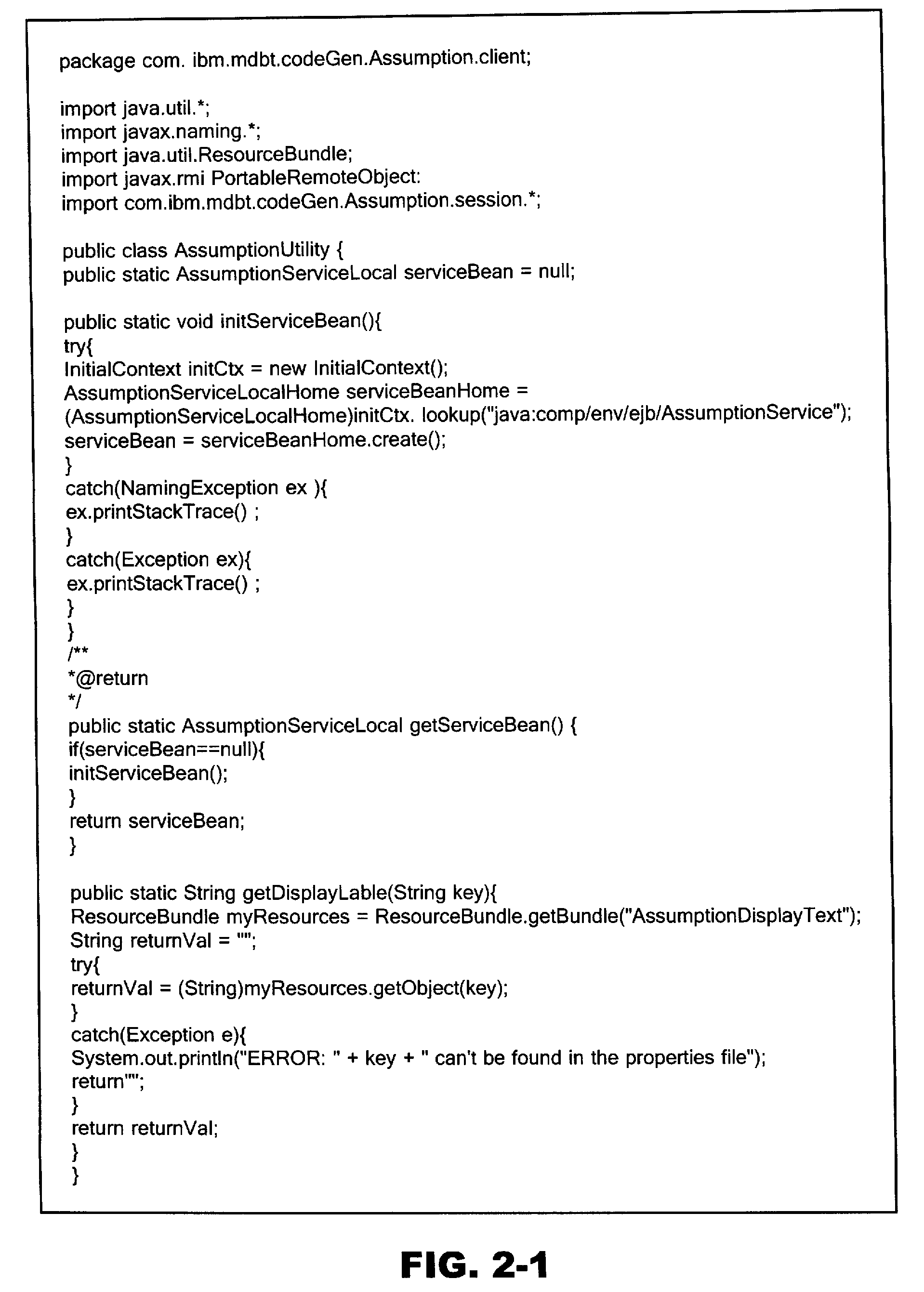Apparatus and method for supporting model-driven development
a model and development method technology, applied in the direction of software maintenance/management, program control, instruments, etc., can solve the problems of reducing development costs, shortening the development period, and the model defined in the upper layer needs to be considered as one to be changed inevitably
- Summary
- Abstract
- Description
- Claims
- Application Information
AI Technical Summary
Benefits of technology
Problems solved by technology
Method used
Image
Examples
Embodiment Construction
[0040]Hereinafter, the best modes (hereinafter, called embodiments) for carrying out the invention will be described in detail by referring to the accompanying drawings.
[0041]FIG. 1 is a diagram showing a source model that is an input for a model transformation, a target model that is an output of the model transformation, and processes of changing each model and merging the models. The source model and the target model resulting from the first model transformation are denoted by SM0 and TM0, respectively. In addition, SM1 denotes the source model obtained when a person in charge of editing the source model (called an SM editor, below) changes SM0, and TM1 denotes the target model obtained through the model transformation of SM1. Moreover, TM0_n denotes the target model obtained through the n-th change of TM0 by a person in charge of editing the target model (called a TM editor, below).
[0042]Here, When TM01 that is the latest target model is generated from TM1 and TM0_n, it is neces...
PUM
 Login to View More
Login to View More Abstract
Description
Claims
Application Information
 Login to View More
Login to View More - R&D
- Intellectual Property
- Life Sciences
- Materials
- Tech Scout
- Unparalleled Data Quality
- Higher Quality Content
- 60% Fewer Hallucinations
Browse by: Latest US Patents, China's latest patents, Technical Efficacy Thesaurus, Application Domain, Technology Topic, Popular Technical Reports.
© 2025 PatSnap. All rights reserved.Legal|Privacy policy|Modern Slavery Act Transparency Statement|Sitemap|About US| Contact US: help@patsnap.com



